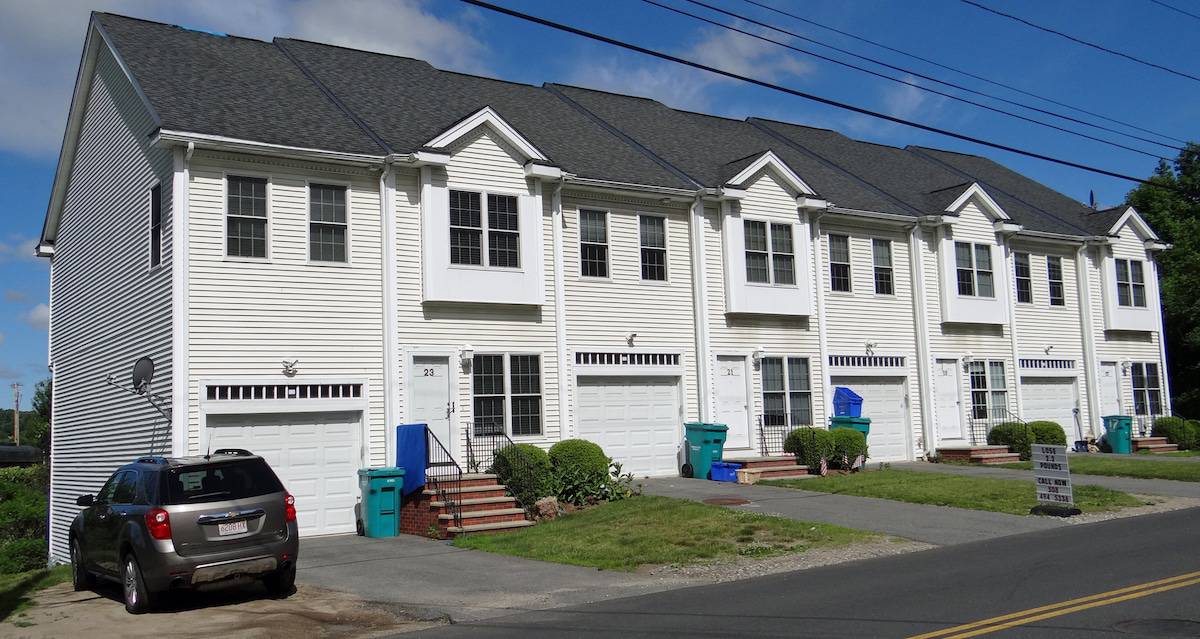
Your home’s siding is vital for keeping out the weather and insects, but also a major part of your home’s appearance and curb appeal. It’s important to understand when siding should be replaced and what kind of siding is best.
Vinyl siding, the most durable, can last up to 40 years. Of course, many homeowners may not know when the home last had new siding, so here are some signs that your siding may need to be replaced:
- Peeling interior paint and other signs of moisture or mold.
- Siding that is loose, cracked, or broken.
- Siding that is warped or buckled.
- A noticeable increase in your heating and/or cooling bills when rates have not gone up.
- You are having to repair your siding frequently. Wood siding should only need to be repainted once a decade, and if you are painting it to cover up peeling, cracking, or chipping this may mean you need to replace.
- You can see dry rot on your wooden siding.
All of these are signs that your siding at least needs to be repaired, if not replaced. An inspection from a siding contractor in Nantucket, MA can help you determine whether your siding has life left in it or whether it is time to replace it.
The best time of the year to install new siding is the fall. This means you have weather that is neither too cold nor too warm, important if you are living in a half-naked house.
Also, new siding tends to come in in the winter, meaning that we often have deals on older material that is still in very good condition. Most people want to get their siding done in spring or summer when there is more time. Fall is also often a slow time for other projects. Unless your siding is in unusually poor condition, it’s best to wait for fall if you can. You will get the job done faster and often for a lower price.
Siding can be made out a variety of materials including wood and brick. While brick offers a great and specific look, if you are considering wood siding, you should consider vinyl instead. Why?
Vinyl siding is low maintenance. The color is bonded into the siding itself, meaning it doesn’t need to be painted or sanded, and is less likely to fade than painted wooden siding. It is extremely durable (as already mentioned, it can last as long as 40 years), resists the elements and does not dent easily.
You can get all kinds of colors, including vinyl made to look like natural wood, and you can match the style of your home easily. Because of its durability, vinyl siding has a lower environmental impact.
You might not want to strip your home’s siding, so you might ask if it’s okay to install new siding over old. The answer is in most cases no. While you absolutely can install new siding over old, and it can add insulation value, it is actually more complicated for the installer. Doors, windows, and downpipes cause issues that make installation more complicated. Also, the old siding may be structurally weak and that can weaken the new siding. This can result in the entire thing coming off in a storm.
In general, you should only install new siding over old siding if the old one can be used as substrate…which typically means stone, roughcast, or concrete siding. It will not save time or money and will not give a better result.
If your siding is looking battered, one thing to consider is whether it can be repaired or should be replaced.
If there is a small damaged area then repair is typically worth it. For example, if a tree branch is blown into the side of your home during a storm and dents or cracks one or two boards, then it is worth repairing, especially if the siding is only a few years old. However, if there are multiple or larger damaged areas it can be more cost-effective to replace.
Older vinyl siding that has been discontinued may also be hard to match. This may require using paint to hide or mask the repair.
If you aren’t sure, again, it’s best to contact a siding contractor in Nantucket, MA who can give you an honest opinion and also help you find a good match if repair is recommended.
First of all, we determine whether replacement is needed. Small damaged areas, again, can often be simply repaired. This likely involves replacing a couple of boards.
Siding costs depend on the size of your home, the amount of work it takes to remove the old siding, and the choice of siding to replace it. The style of your home may impact labor costs because it determines how much cutting and shaping needs to be done.
Vinyl is typically sold by the square or box. A square covers 100 square feet of exterior wall and a box contains two squares. Each square can cost anywhere between $130 and $1,000 depending on the style of siding you choose. This is not including installation. Expect to pay at least $1,000 to remove and dispose of your old siding. We will dispose of it properly and in an environmentally friendly manner, with no hassle for you.
Extra cost may be incurred if you want insulated siding, siding which resembles logs, stone, or brick, or if your home is older and vertical siding will make it look better.
Remember that your new siding will last a lifetime. The total cost of materials and installation ranges from $3,000 to $20,000. Larger homes cost more as do certain types of siding.
Vinyl siding is the best replacement siding for your home, even if you had wood siding before. It is durable, weather- and dent-resistant and never needs painting.
